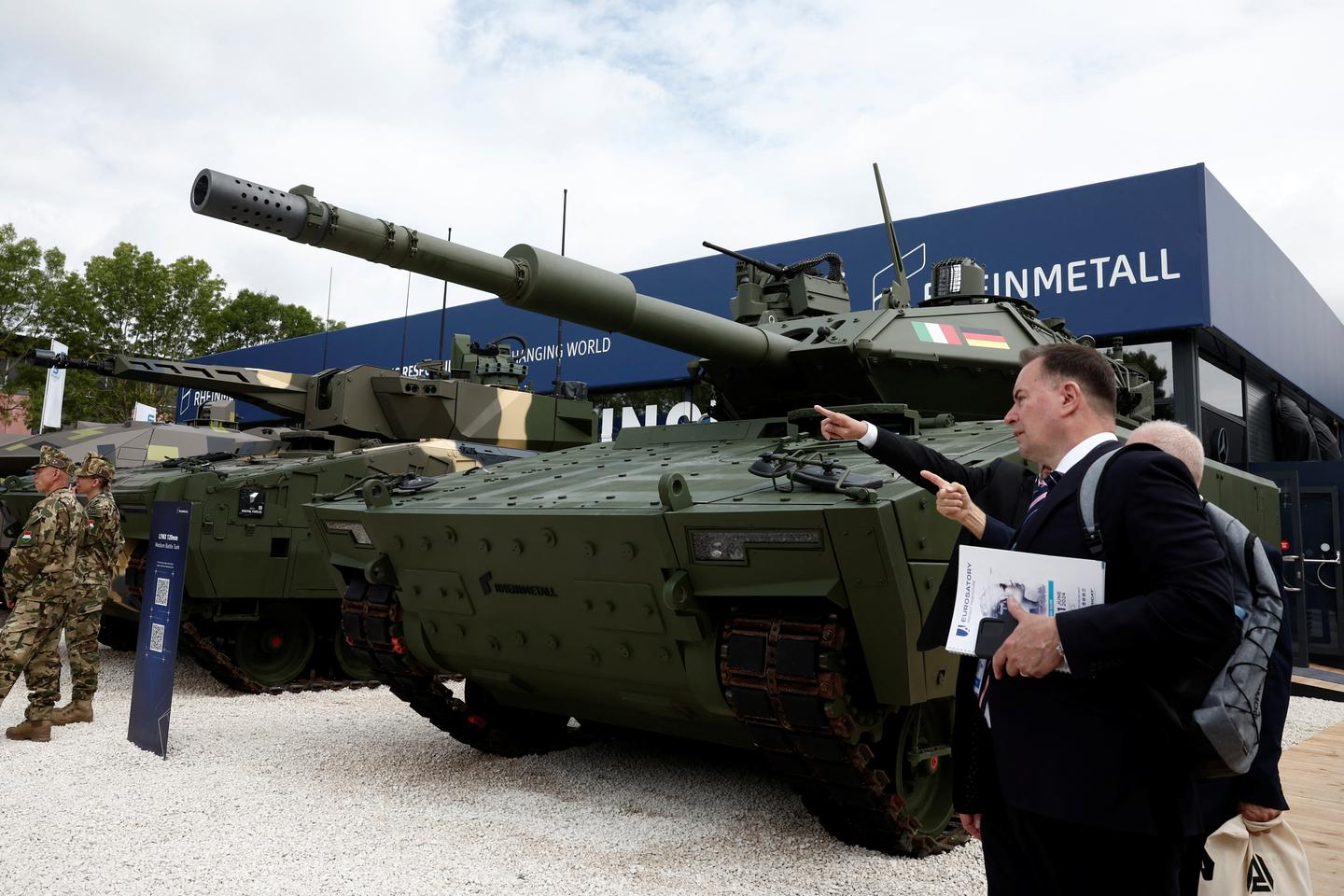The war in Ukraine is reviving competition between tank manufacturers


From Kursk in Russia to El Alamein in Egypt, passing through the Ardennes, we thought that the great tank battles were a thing of the past. But now, in the Russo-Ukrainian war, tanks are back in the spotlight, even if their use does not reach the scale of World War II and other equipment (artillery, missiles, drones, etc.) plays a decisive role. Since 2022, in this new military context, a competition has been developing between German, American and South Korean manufacturers to equip the armies of the Old Continent, while Russian industry is gaining power.
Italy has just come up with a surprise. On July 3, the aerospace and defense company Leonardo announced a partnership with the German Rheinmetall group to supply the Italian Army with a “new main battle tank” Panther KF51. The agreement provides for the creation of a 50:50 joint venture in Italy, which will also produce the new “Italian” Lynx armored vehicle for the Esercito Italiano. In addition, “the agreement will open up new global markets for us where we would not have been able to compete as independent companies,” said Roberto Cingolani, General Director of Leonardo, in an interview with the Financial Times on July 7th.
This partnership marks the end of the “strategic alliance” that Leonardo planned at the end of 2023 with the Franco-German company KNDS to create “a truly European group” and “work more closely together in the field of land defense electronics”. At the time, Rome wanted to buy 133 Leopard 2A8 tanks, the latest generation armored vehicle from Krauss-Maffei Wegmann, the German branch of KNDS; and above all, integrate them into the Main Ground Combat System (MGCS), since Paris wanted to invite Rome to rebalance its relations with Berlin within the framework of this Franco-German program.
Ambitious program
However, the alliance does not offer a clear long-term strategic perspective for Leonardo, whose technological contribution would have been “minimal” and limited to some components for KNDS’s existing tanks, Cingolani explained in justifying his withdrawal. 60% of the Italian-German joint venture’s production (electronics, turrets, etc.), certification tests and logistics would, on the other hand, be carried out on the Iberian Peninsula, which underlines the desire of Italian Prime Minister Giorgia Meloni to strengthen her country in Europe while modernising its armed forces.
The agreement is a milestone in the consolidation of Europe’s fragmented defence industry and technology. It also poses a threat to the MGCS, the ambitious European programme designed to replace the French Leclerc and the German Leopard 2 by 2040. “Where will the MGCS find its place if the German and Italian armies will be massively equipped with Leopard 2A8 and the new KF51 heavy tank by then, and a tank has a lifespan of forty years?” asks Marc Chassillan, armament engineer and international consultant.
You still have 46.09% of this article to read. The rest is for subscribers only.



